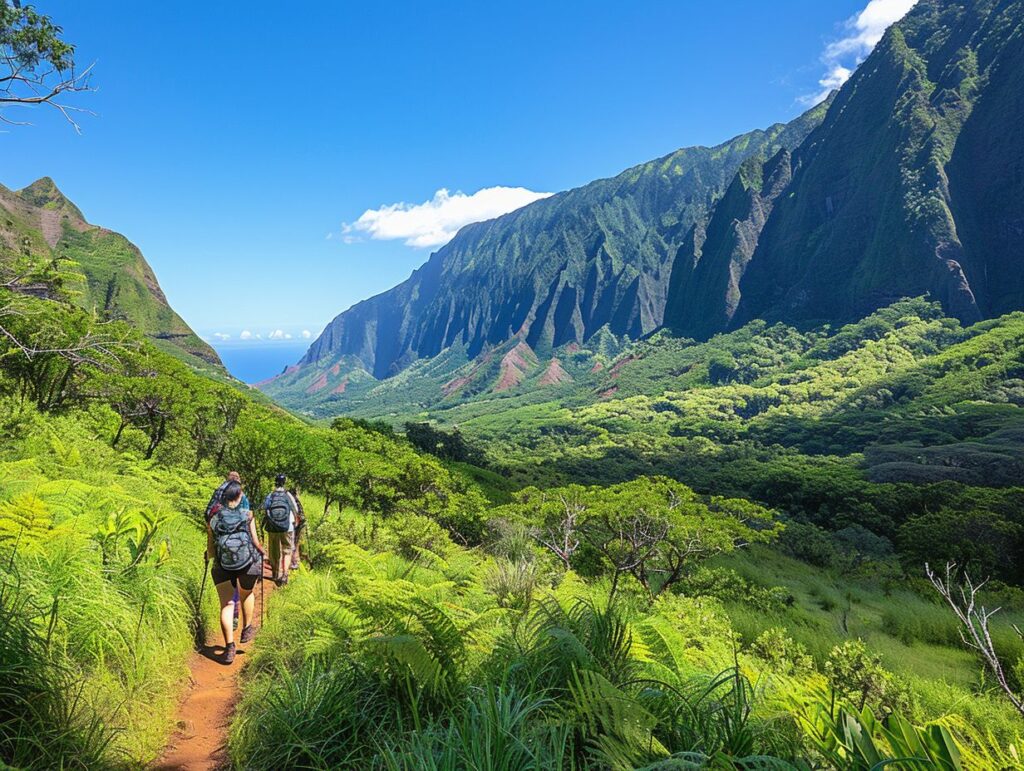Are you an outdoor enthusiast looking to explore the stunning beauty of the Mourne Mountains?
Before you lace up your hiking boots and hit the trails, there are a few key things you need to know.
This guide covers everything from the terrain and weather conditions to the best time of year to hike, ensuring a safe and enjoyable hiking experience.
Discover the popular hiking trails in the area, essential items to bring, and tips for staying safe while exploring this picturesque landscape.
Key Takeaways:
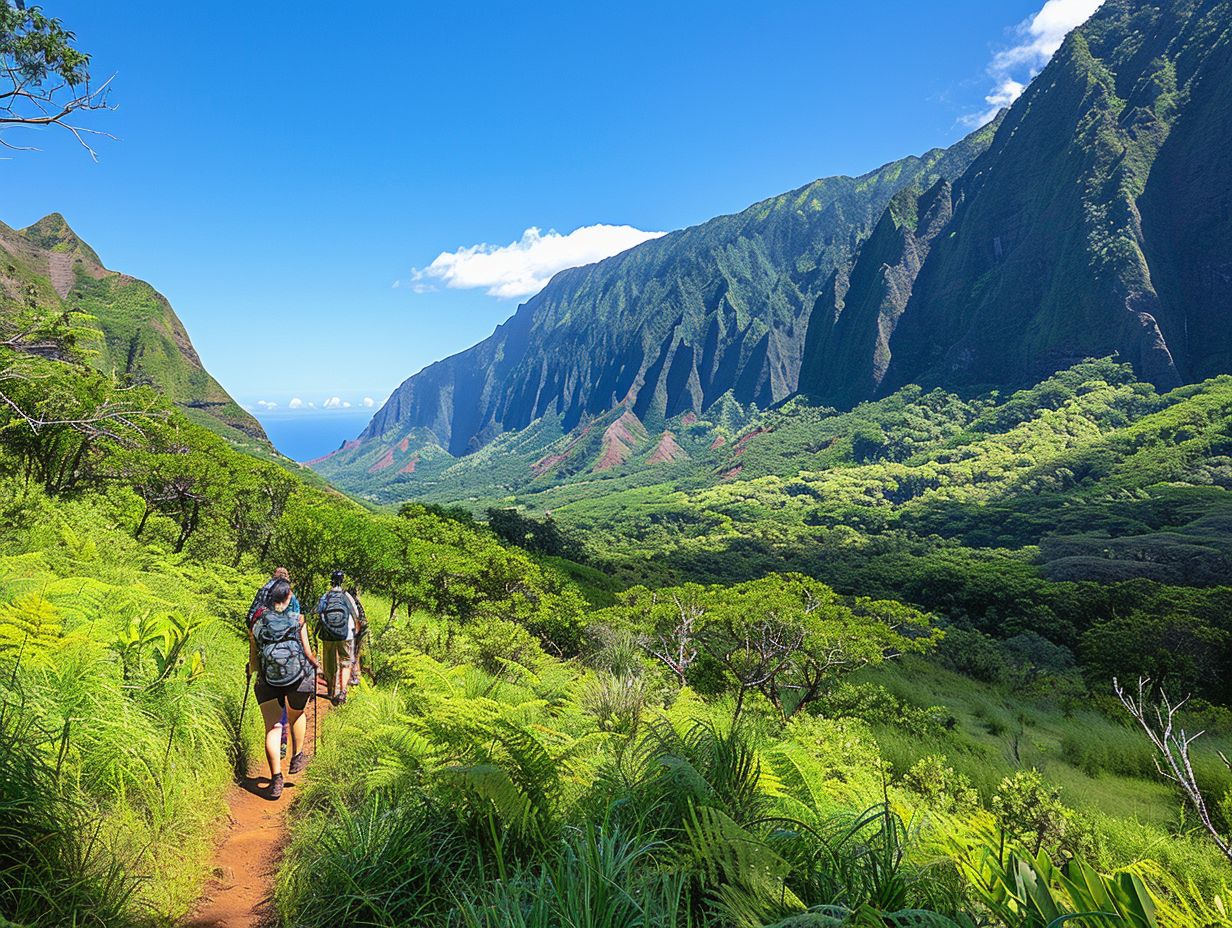
- Choose the right time of year to hike in the Mourne Mountains to avoid extreme weather conditions.
- Stay safe and enjoy your hike by knowing your limits, staying hydrated, wearing proper gear, and being aware of your surroundings.
- Be prepared for emergencies by knowing how to handle injuries, what to do if you get lost, and how to prepare for unexpected situations.
What to Know Before Hiking in the Mourne Mountains
Before starting a hiking expedition in the Mourne Mountains located in Northern Ireland, it is vital to obtain a guidebook and detailed maps, familiarise oneself with the terrain, and be prepared for changing weather conditions to ensure a safe and environmentally responsible expedition.
What is the Terrain Like?
The Mourne Mountains terrain showcases a diverse array of landscapes, encompassing rugged mountains, wooded areas, and picturesque viewpoints, establishing it as an appealing destination for hiking enthusiasts.
Within this magnificent range, hikers are presented with a selection of trails designed to accommodate various levels of experience. The Slieve Donard Trail, a favoured option, guides adventurers to the highest summit in Northern Ireland.
Throughout this journey, hikers may come across remarkable natural attractions such as the striking coastline, charming waterfalls like the cascading Mare’s Tail, and tranquil reservoirs nestled within the mountainous terrain.
Prominent landmarks including the iconic Mourne Wall, intersecting multiple peaks, imbue the landscape with a sense of heritage and exploration as individuals traverse through this awe-inspiring environment.
What is the Weather Like?
The weather in Northern Ireland is known for its unpredictability, particularly in the Mourne Mountains, where conditions can vary significantly based on the season and altitude. During the winter months, the Mourne Mountains often face cold temperatures, frost, and challenging terrain due to snowfall, making it difficult for hikers.
Spring in the area brings milder weather, yet unexpected rain showers and fog can still occur, leading to reduced visibility. Summer emerges as the most popular time for hiking, offering longer daylight hours and warmer temperatures; however, hikers should be prepared for occasional rainstorms.
In autumn, the changing foliage displays vibrant colours, but hikers must remain cautious of slippery trails caused by wet leaves.
It is imperative for hikers to consistently monitor weather forecasts and pack suitable gear to accommodate potential environmental changes.
What is the Best Time of Year to Hike?
The optimal season for hiking in the Mourne Mountains typically falls between late spring and early autumn, a period characterised by stable weather conditions and peak vibrancy of the natural surroundings.
During this timeframe, hikers have the opportunity to appreciate the blossoming wildflowers, verdant foliage, and diverse wildlife that flourish in the region. The warmer temperatures contribute to a more pleasant hiking experience, enabling visitors to fully engage with the beauty of their environment.
Additionally, the extended daylight hours afford hikers more time to explore the trails and marvel at the panoramic vistas of the mountains. The moderate climate diminishes the likelihood of encountering severe weather conditions such as snow or heavy rainfall, enhancing the safety of hikers as they venture out to relish the picturesque landscapes.
What are the Essential Items to Bring?
When embarking on a hiking excursion in the Mourne Mountains, it is imperative to equip oneself with essential items to guarantee a safe and gratifying journey.
The selection of appropriate hiking gear, a comprehensive map, a guidebook, and safety equipment is paramount for ensuring safety and enjoyment during the expedition.
Proper clothing is of utmost importance to ensure comfort and protection against the unpredictable weather conditions that may arise. Therefore, it is advisable to include moisture-wicking layers, a waterproof jacket, sturdy hiking boots, and a hat in your gear.
Along with clothing, navigation tools such as a compass and GPS device are critical for maintaining the correct trail path. Safety equipment is equally crucial and should consist of a first aid kit, torch, whistle, and emergency blanket to address any unforeseen situations that may arise during the hike.
Furthermore, it is vital to carry an ample supply of water, high-energy snacks, and a multi-tool to cater to any unexpected circumstances. Adequate preparation not only enhances the overall hiking experience but also ensures safety within the mountainous terrain, which is known for its unpredictable nature.
Popular Hiking Trails in the Mourne Mountains
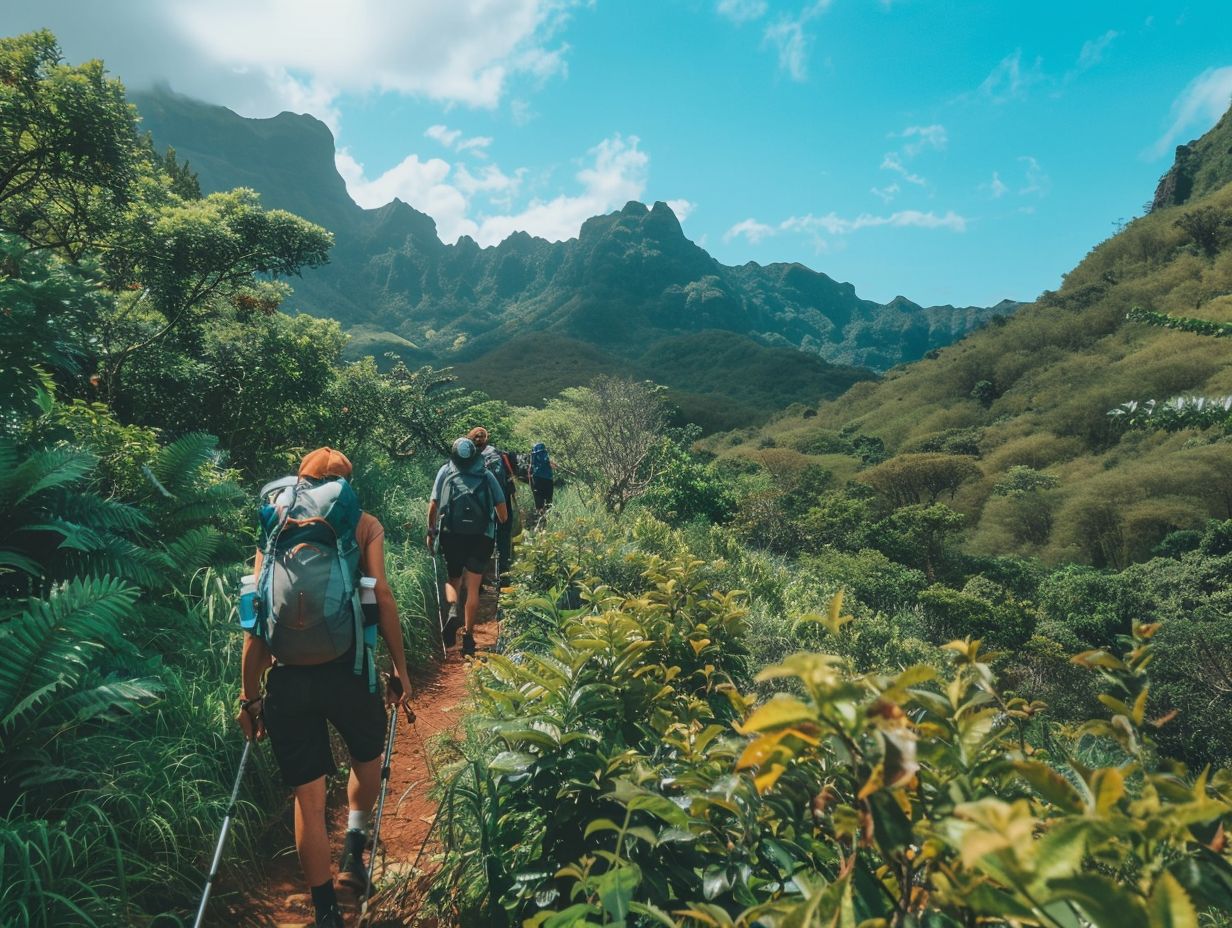
The Mourne Mountains present an array of popular hiking trails that provide adventurers the opportunity for exploration and adventure amidst beautiful scenery and historical landmarks.
The Mourne Way
The Mourne Way is a renowned trail spanning the Mourne Mountains, offering walkers a unique opportunity to immerse themselves in nature and explore the region’s rich heritage.
Encompassing a distance of approximately 26 miles, this trail meanders through some of the most remarkable landscapes in Northern Ireland. As hikers journey along the trail, they are presented with awe-inspiring views of granite peaks, lush valleys, and peaceful lakes.
Along with the natural beauty, walkers encounter notable landmarks such as Slieve Donard, the highest peak in the Mourne Mountains, and the esteemed Silent Valley Reservoir, renowned for its peaceful charm. The route also passes through charming villages like Newcastle, where visitors can explore the historical and cultural essence of the region.
The Brandy Pad
The Brandy Pad is a trail with a significant historical and mythological background, which was previously utilised by smugglers for the transit of illicit goods. It has since transformed into a popular path for hikers seeking an adventurous experience within the scenic Mourne Mountains.
The trail’s historical roots trace back to the 18th century when it provided a covert passage for smugglers to circumvent detection by authorities.
These audacious individuals navigated the challenging terrain, carefully transporting their unlawful merchandise while skilfully avoiding capture through a complex network of concealed pathways.
Presently, contemporary hikers have the opportunity to relive the thrill of journeying along this ancient route, immersing themselves in the captivating landscape of mist-enveloped peaks and verdant valleys that envelop them. The Brandy Pad encapsulates an aura of enigma and exhilaration, establishing itself as an essential destination for those yearning for exploration and discovery.
The Slieve Donard Summit
The Slieve Donard Summit, the highest peak in Northern Ireland, presents hikers with exceptional viewpoints and a demanding ascent through the rugged terrain of the Mourne Mountains. As hikers progress towards the summit, they encounter a combination of steep inclines, rocky paths, and abundant greenery, contributing to the adventure and sense of achievement.
The journey serves as a test of endurance, with each step revealing new vistas of the undulating hills, glistening lakes, and the vast Irish Sea.
Upon reaching the summit, visitors are treated to a spectacular 360-degree panorama, offering views of the Isle of Man, the Wicklow Mountains, and segments of Scotland on clear days. The natural splendour surrounding the peak, coupled with the feeling of triumph, renders the entire trek a truly unforgettable experience.
Tips for a Safe and Enjoyable Hiking Experience
To ensure a safe and enjoyable hiking trip in the Mourne Mountains, it is vital to follow safety procedures, make comprehensive preparations, and show proper respect for conservation efforts aimed at protecting the area’s natural environment.
Know Your Limits
It is imperative to understand one’s limitations whilst hiking in the Mourne Mountains, as this practice aids in accident prevention and ensures that the adventure remains both enjoyable and safe.
Ahead of embarking on a hiking expedition in the challenging terrain of the Mournes, it is crucial to conduct an honest assessment of one’s physical fitness level.
This evaluation should commence by gradually enhancing physical activity and endurance through consistent exercise routines. Additionally, individuals should reflect on their prior hiking experiences and gauge how they align with the difficulty level of the trails in the region.
Strategic planning is essential in preparing for hikes in the Mourne Mountains and involves activities such as reviewing trail maps, monitoring weather forecasts, and packing essential supplies like water, snacks, and a first aid kit. These preparatory measures are vital in ensuring readiness for the unpredictable mountainous environment.
Stay Hydrated and Well-Fed
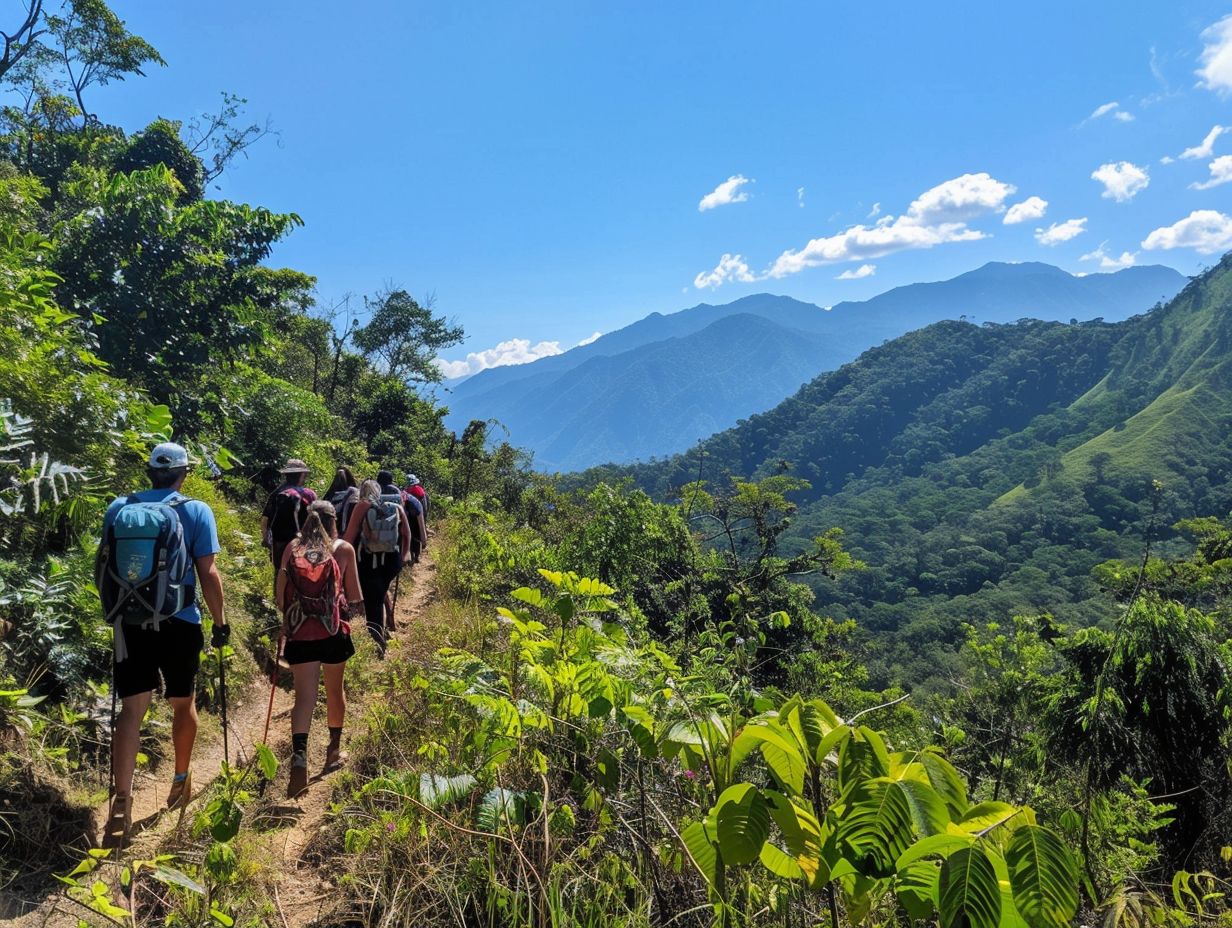
Maintaining hydration and nourishment is imperative for sustaining energy levels and ensuring safety during hikes in the Mourne Mountains. Opting for lightweight, nutrient-rich snacks such as trail mix, muesli bars, and fresh fruits can offer a quick energy boost without imposing a heavy load.
Carrying a reusable water bottle or a hydration pack is essential to maintain proper hydration throughout the duration of the hike. It is advisable to consume water regularly rather than waiting until thirst sets in, as dehydration may result in tiredness and feeling faint.
By preemptively planning and selecting appropriate snacks and hydration methods, hikers can take part in their exploration of the Mourne Mountains with improved stamina and overall well-being.
Wear Proper Hiking Gear
It is imperative to wear proper hiking gear for safety and comfort when venturing into the trails of the Mourne Mountains.
Having the appropriate equipment for varying weather conditions and terrains can significantly enhance your hiking experience.
- On warm and sunny days, it is essential to wear lightweight and breathable clothing to remain cool and protected from the sun.
- Conversely, during colder or wetter days, insulated layers, waterproof jackets, and pants are essential to remain warm and dry.
- High-quality hiking shoes with good traction are critical for rocky trails, while moisture-wicking socks aid in preventing blisters.
- Essential accessories such as a durable backpack, a dependable map and compass, sun protection, and an ample supply of water and snacks are imperative for a successful hiking expedition.
Be Aware of Your Surroundings
Maintaining situational awareness is paramount for ensuring safety and environmental preservation during hiking excursions in the Mourne Mountains.
When traversing the trails, it is imperative to remain vigilant for any indications of wildlife presence, such as tracks or auditory cues. Adherence to designated paths is essential to mitigate the risk of disorientation and minimise harm to the fragile ecosystem.
Carrying navigational aids like maps, compasses, and GPS devices is recommended for heightened safety measures. Additionally, preparedness for abrupt weather fluctuations entails carrying supplementary clothing layers and rain protection.
Responsible waste management practices, including the removal of all litter and leaving no evidence of visitation, are crucial for the conservation of the pristine natural surroundings.
What to Do in Case of Emergency
If there is an emergency during a hike in the Mourne Mountains, having the suitable knowledge and equipment can be crucial in protecting one’s safety.
How to Prepare for Emergency Situations?
Being prepared for emergency situations while hiking in the Mourne Mountains includes carrying essential safety gear, developing a plan, and understanding the proper use of tools. One critical component of emergency preparation is ensuring the presence of a well-equipped first aid kit. This kit should contain items such as dressings, antiseptic wipes, and painkillers to address minor injuries effectively.
Along with a first aid kit, communication devices like a fully charged mobile or a whistle are essential for signalling for help in case of an emergency. Other safety tools like a multi-tool, torch, and emergency foil can also prove invaluable in emergency situations.
It is not only important to have these items in your possession but also crucial to be well-versed in their effective and efficient use during an emergency.
What to Do if You Get Lost?
If an individual becomes disoriented while hiking in the Mourne Mountains, it is advisable to maintain composure and utilise navigational tools to facilitate a safe return to the correct path.
One should evaluate the immediate environment to determine if any recognisable landmarks or trails are present that could provide guidance back to the intended route. In the presence of a map and compass, efforts should be made to establish one’s position on the map by identifying prominent features in the vicinity.
Alternatively, if equipped with a GPS device, it is recommended to utilise it to ascertain one’s coordinates and compare them with the planned route. In situations where uncertainty persists regarding one’s location, it is generally recommended to remain stationary rather than embarking on further exploration.
Enhancing visibility by creating signals using reflective materials or generating sounds can aid in attracting attention for potential rescue operations.
How to Handle Injuries on the Trail?
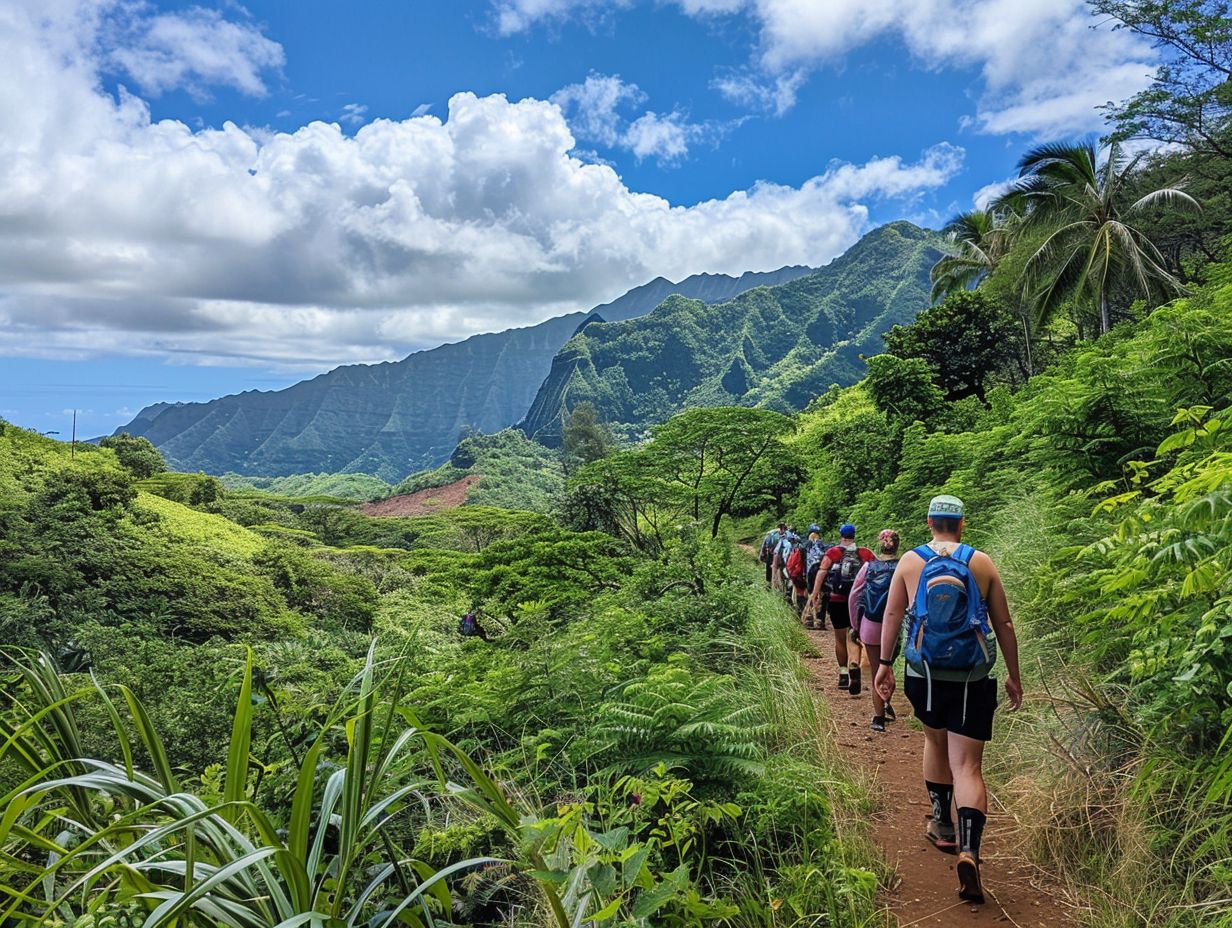
Dealing with injuries while hiking necessitates an understanding of fundamental first aid principles and the possession of appropriate supplies to address typical hiking-related injuries.
Whether it is a twisted ankle resulting from navigating rough terrain or a laceration incurred from traversing dense vegetation, preparedness with a well-equipped first aid kit can significantly impact the effective management of such situations.
Common injuries such as blisters, sprains, or minor lacerations can be easily dealt with using the contents of a standard first aid kit. It is essential for hikers to familiarise themselves with the components of their kit and their timely usage to prevent minor injuries from developing into more serious issues while in the wilderness.
Frequently Asked Questions
What are the Mourne Mountains?
The Mourne Mountains are a range of mountains located in County Down, Northern Ireland. They are known for their stunning landscape and popular hiking trails.
Do I need any special equipment for hiking in the Mourne Mountains?
Yes, it is recommended to bring appropriate hiking gear including sturdy hiking boots, waterproof clothing, a map, and plenty of water and snacks. It is also important to check the weather forecast before your hike.
Are there any guided hiking tours available in the Mourne Mountains?
Yes, there are several guided hiking tours available in the Mourne Mountains. These tours offer a more in-depth experience and are led by experienced guides who can provide valuable insight into the area’s history and geography.
What is the best time of year to go hiking in the Mourne Mountains?
The best time to go hiking in the Mourne Mountains is from late spring to early autumn when the weather is milder and the days are longer. However, it is important to be prepared for all types of weather as it can change quickly in the mountains.
Are there any accommodations near the Mourne Mountains for hikers?
Yes, there are a variety of accommodations available near the Mourne Mountains, including hotels, bed and breakfasts, and self-catering cottages. It is recommended to book in advance, especially during peak hiking season.
How difficult are the hiking trails in the Mourne Mountains?
The difficulty of the hiking trails in the Mourne Mountains varies, with some easier trails suitable for beginners and others more challenging for experienced hikers. Be sure to research the trail you plan to hike beforehand and choose one that matches your skill level.

